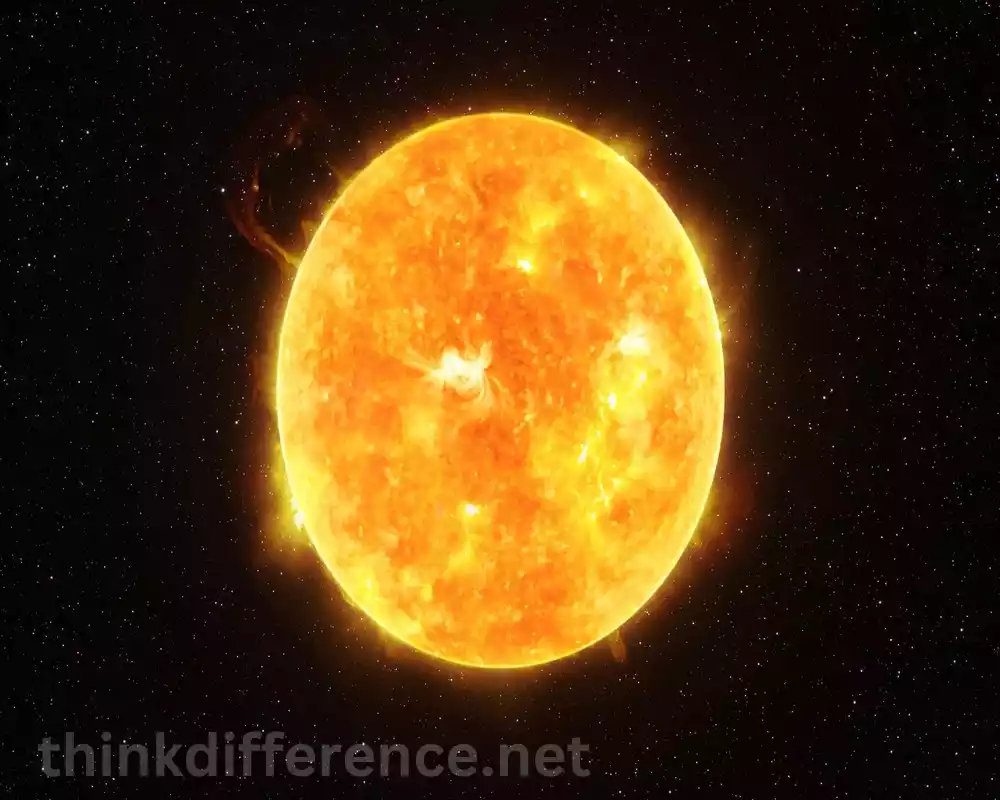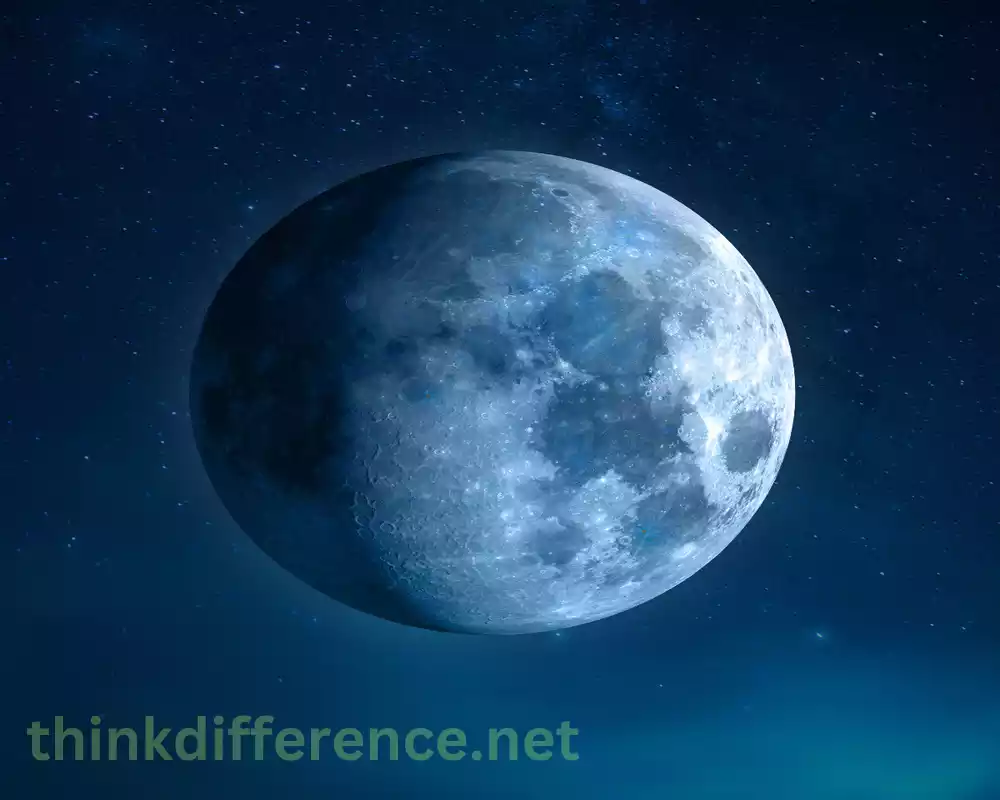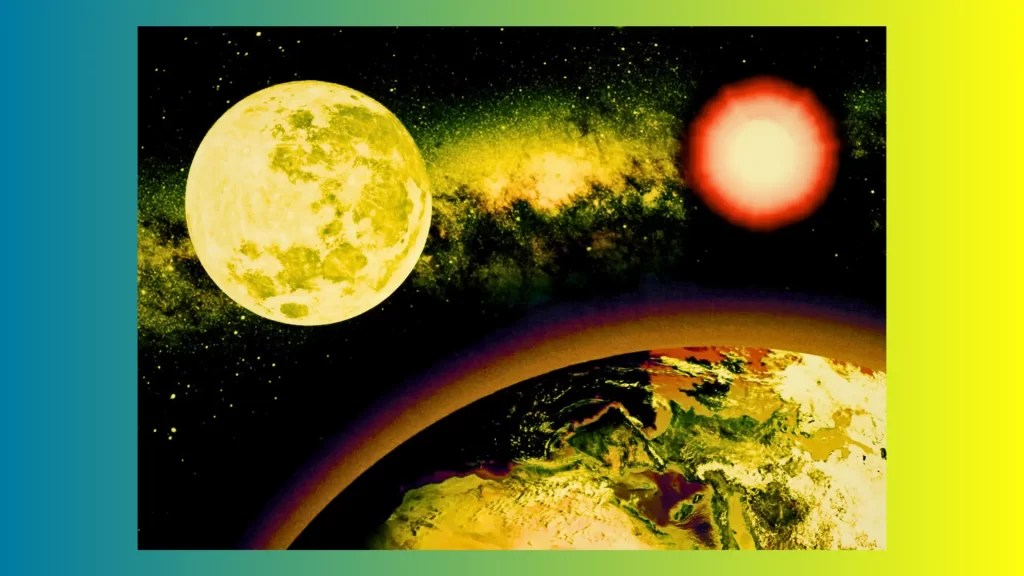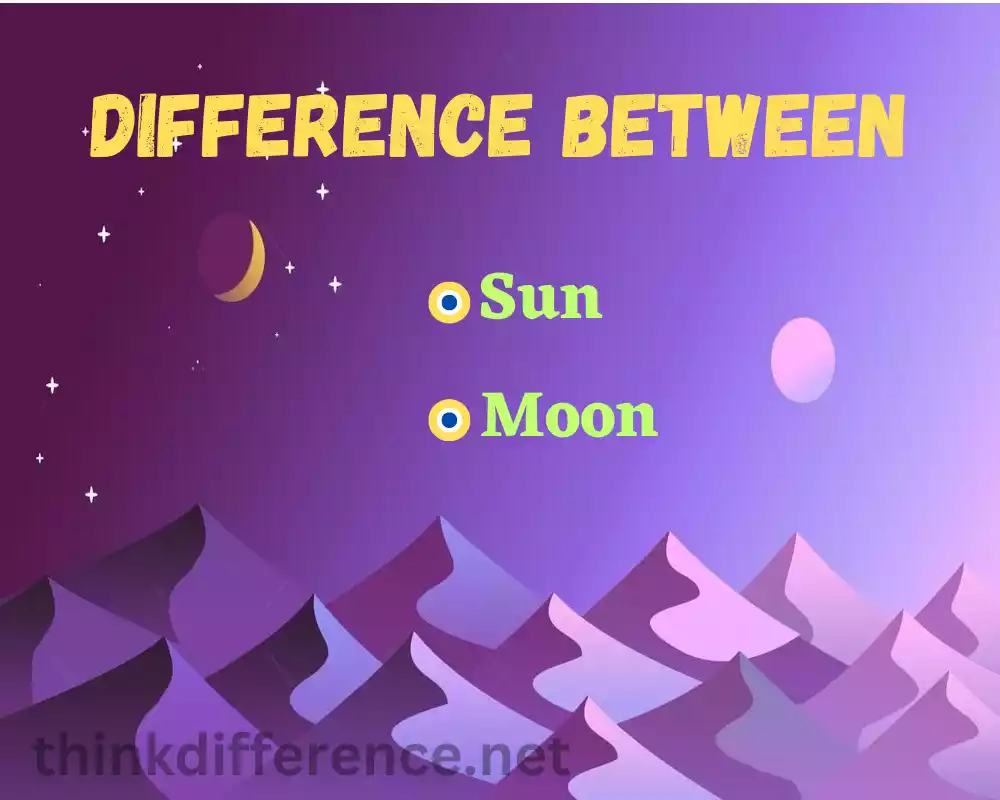The Sun and Moon have long captured our interest as celestial bodies that play such an influential role in both human lives and nature around us. Here, we explore their significance as well as reveal some fascinating information regarding both bodies.
Brief overview of the Sun and the Moon
The Sun is an immense ball of gas occupying nearly 99percent of total mass in our Solar System and composed predominantly of Hydrogen and Helium atoms. Its immense size and gravitational pull govern the motion of the planets, including Earth. The Sun radiates intense heat and light, providing energy essential for sustaining life on our planet. It is responsible for the day-night cycle and the changing seasons. Sunspots and solar flares are some of the fascinating phenomena associated with the Sun.
The Moon, Earth’s only natural satellite, is a rocky, cratered body that orbits around our planet. Moon is considerably smaller than Earth; approximately one sixth in diameter and 80th of mass. The moon’s surface features mountains valleys valleys and impact craters similar to Earth. Its composition closely resembles that of its crust with mostly minerals and rocks present on its surface. The Moon’s most noticeable influence on Earth is its role in causing tides due to gravitational forces. The Moon’s phases, ranging from new moon to full moon, create a mesmerizing cycle visible from Earth.
The Sun and the Moon hold unique positions in our solar system, each contributing to Earth’s functioning in distinct ways. Understanding their interactions and differences will offer valuable insight into the nature of our universe and the forces which shape Earth.
Importance of the Sun and the Moon in Earth’s system
Studies suggest that both the Sun and Moon play an integral part of Earth’s ecosystem, playing major roles that impact various aspects of its existence and life forms upon it.
Here are just a few ways these celestial bodies contribute:
- Sunlight and Energy: The Sun provides heat and light for Earth. This energy fuels plant photosynthesis processes which support life here on the planet through food chains that support each individual in turn. Sunlight also regulates Earth’s climate and weather patterns, driving atmospheric circulation and influencing temperature distribution across the planet.
- Climate and Seasons: The Sun’s position relative to Earth determines the changing seasons. As Earth orbits around its host star, its tilt causes different amounts of sunlight to reach various regions on our globe and produces seasonal cycles including spring, autumn, summer, and winter. These seasonal changes influence weather patterns, agricultural practices, and ecosystems.
- Photosynthesis and Oxygen Production: Photosynthesis, in which plants utilize sunlight’s energy to convert carbon dioxide to oxygen, helps the atmosphere remain balanced by maintaining an equilibrium among atmospheric gases. It plays a significant role in keeping balance in balance of atmospheric gases. The oxygen produced by plants supports the respiration of animals and forms the breathable air that sustains human life.
- Solar Radiation and Climate Balance: Sun radiation includes both visible and ultraviolet (UV) wavelengths which have the power to influence our climate on Earth. Visible light heats our planet while UV plays an essential part in atmospheric processes including breaking down Ozone layers. Understanding solar radiation’s role will enable us to assess climate change impacts more accurately on ecosystems worldwide.
- Tides and Oceanic Processes: The Moon’s gravitational pull influences Earth’s tides. Gravitational interaction amongst Moon, Earth and ocean levels causes them to rise and fall at a constant rate, producing rising and falling ocean levels which rise and fall simultaneously. Tides play a vital role in coastal ecosystems, navigation, and nutrient distribution in the oceans.
- Lunar Cycles and Timekeeping: The Moon’s phases, ranging from new moon to full moon, provide a natural cycle for timekeeping. Lunar calendars have been used by various cultures throughout history to track months, seasons, and religious observances. The Moon’s predictable movements also aid in celestial navigation.
An understanding of both Sun and Moon in relation to our world and climate conditions is integral in appreciating their mutual impact on each other as well as on life itself. Their interactions shape our environment and influence a wide range of natural processes, making them integral components of our existence.
Characteristics of the Sun

1. Physical properties of the Sun:
- Size and mass: The Sun is an immense celestial body. With an approximate diameter of around 1.4 million km (870,000 miles), its diameter stands 109 times larger than Earth. In terms of mass it accounts for nearly 99percent of all mass in our solar system.
- Composition: The Sun is composed primarily of hydrogen 74% mass and helium 24% mass. At its core lies nuclear fusion which releases large quantities of heat energy in form of light waves.
- Temperature and energy output: The Sun’s inner core can reach temperatures as high as 15 million degree Celsius (27 millions Fahrenheit), due to nuclear fusion releasing an enormous amount of heat that radiates throughout its spectrum, emitting radio waves as radio waves as visible light. Radio waves being most well known form of energy released into space by nuclear fission.
2. Role of the Sun in the solar system:
- Source of light and heat: Sunlight and heat come primarily from our star. Its intense energy radiates outward, providing illumination and warmth to our planet. Sunlight is essential to photosynthesis – the process by which plants use solar energy to convert itself into electrical current and create food chains and ensure survival on our planet. Without photosynthesis there would be no food chain and existence would cease altogether.
- Gravitational influence on celestial bodies: The Sun’s enormous mass exerts a powerful gravitational pull on all the objects within its vicinity. Astrosaurs, moons, planets and comets within our solar system all orbit within an even plane and therefore remain on steady paths around it. This ensures their continued existence in their respective places within spacetime.
3. Features and phenomena associated with the Sun:
- Sunspots: Sunspots are dark spots which appear on the photosphere surface of the Sun. They are cooler than the surrounding regions and are caused by strong magnetic activity. Sunspots often occur in pairs or groups and vary in size and duration.
- Solar flares: Solar flares are energetic explosions emitted by the Sun that release large amounts of energy. Charged particles or X-rays in space – upon their origination. Solar flares are associated with magnetic disturbances and can impact Earth’s space weather and communication systems.
- Solar eclipses: At times of solar eclipse, when the Moon passes between Earth and Sun it casts shadows onto our surface and sometimes completely blocks sunlight’s illumination – an event which leaves viewers stunned as its shadow passes in front of our Sun! Such phenomena are truly spectacular as their Moon seems to move directly in front of its illumination source – truly impressive sights for anyone watching.
By understanding the specific characteristics of our Sun. Its dimensions, structure and energy output, we can gain greater insight into its place as the primary element in the solar system. The Sun’s properties and phenomena not only influence Earth’s climate and weather but also contribute to the understanding of stellar evolution and the broader field of astrophysics.
Characteristics of the Moon

1. Physical properties of the Moon:
- Size and mass: The Moon is Earth’s sole natural satellite with an Orbit around our planet that orbits around 3,474 km (2,159 miles). It covers approximately one fourth of our total surface area while mass estimation puts its mass at about one eightieth that of Earth.
- Composition: The Moon’s composition is primarily rocky and is similar to Earth’s crust. Elements like oxides and silicates with trace amounts of various metals make up its composition. The Moon lacks a significant atmosphere and water in liquid form on its surface.
- Surface features: The Moon’s surface is characterized by various distinct features. It has numerous impact craters created by collisions with asteroids and comets. There are flat, dark areas called maria, which are ancient volcanic plains. The Moon also features mountains, valleys, and lunar rilles (elongated depressions) formed by ancient volcanic and tectonic activities.
2. Role of the Moon in Earth’s system:
- Lunar phases and tides: As it orbits Earth, the Moon experiences various phases, from new moon to full moon and beyond. These cycles reflect its changing position relative to moon, earth, Sun, and tides which arise due to gravitational pull from Moon on Earth resulting in rise and fall of sea levels synchronously with each tide cycle.
- Stabilizing Earth’s rotation and axial tilt: The Moon’s presence helps stabilize Earth’s rotation and axial tilt. Its gravitational interaction with Earth prevents significant variations in Earth’s tilt, resulting in relatively stable seasons and a habitable climate.
3. Features and phenomena associated with the Moon:
- Lunar craters: Moon surface features many craters formed from impacts created by meteoroids crashing onto it. These craters provide valuable information about the history of impacts in the solar system.
- Maria: The Moon’s maria are large, dark, and relatively smooth areas on its surface. They are ancient volcanic plains formed by volcanic activity billions of years ago.
- Moonquakes: The Moon experiences moonquakes, which are seismic activities similar to earthquakes on Earth. Moonquakes result from tide forces created by gravitational interactions between Earth and Moon as well as internal cooling/shrinking processes in both.
- Lunar Eclipses: Lunar eclipses occur when Earth moves between Sun and Moon casting shadows on it causing its face to dim or appear reddish-tinged during passage through our shadow, casting darkened shadows onto it from above and below respectively. This causes darkness on either side causing it to appear darker overall or become redder in coloration as seen from Earth below.
Understanding the unique attributes and functions of our Moon can give us greater insight into its place within Earth’s system. From its impact craters to its influence on tides and stabilizing Earth’s rotation, the Moon’s properties and phenomena have shaped its geological history and impacted our understanding of celestial bodies.
Comparison table of Sun and Moon

Here is comparison table highlighting the key differences between The Sun and The Moon:
| Aspect | Sun | Moon |
|---|---|---|
| Size | Very large, diameter of about 1.4 million km (870,000 miles) | Relatively small, diameter of about 3,474 km (2,159 miles) |
| Mass | Very massive, about 333,000 times more massive than Earth | Less massive, about 1/80th the mass of Earth |
| Composition | Primarily composed of hydrogen and helium | Rocky and solid, similar to Earth’s crust |
| Energy Output | Emits intense light and heat through nuclear fusion | Does not produce its own light or heat, reflects sunlight from the Sun |
| Surface Features | Turbulent photosphere with sunspots and solar flares | Solid, cratered surface with impact craters, maria, mountains, and valleys |
| Gravitational Influence | Exerts strong gravitational pull on planets, moons, and other objects in the solar system | Influences Earth’s tides through its gravitational pull |
| Cultural Significance | Associated with power, life, and divinity in many cultures | Symbolizes intuition, emotions, and feminine qualities |
| Celestial Events | Involved in solar eclipses when the Moon blocks the Sun’s light | Involved in lunar eclipses when Earth casts a shadow on the Moon |
| Role in Earth’s System | Provides light, heat, and energy for life on Earth | Influences tides and stabilizes Earth’s axial tilt |
| Scientific Importance | Studied for understanding stellar evolution and astrophysics | Studied for lunar geology, impact history, and insights into early solar system |
Interactions between the Sun and the Moon
Sun and Moon, being two prominent celestial bodies within our Solar System, communicate in various ways.
Below are just few key interactions between Sun and Moon:
- Solar Eclipses: Solar eclipses occur when the Moon passes between Earth and Sun and casts an extended shadow over our planet’s surface. For a total solar eclipse this occurs when it completely covers out its disc; creating temporary darkening in areas covered by its shadow. Solar eclipses offer unique opportunity to witness alignment among Earth, Moon, Sun, and other celestial bodies such as planet Venus forming its path across spacetime.
- Lunar Eclipses: Lunar eclipses are formed when Earth passes in between Sun and Moon and casts its shadow onto it, casting reddish or coppery hues onto the lunar surface as sunlight from our atmosphere hits it directly. Lunar eclipses can be observed from all points on earth where Moon rises higher than horizon during an event such as this.
- Gravitational interaction and forces on tides: The Moon’s gravitational pull plays an integral part in creating waves on Earth. As it orbits our planet, its gravitational pull causes ocean bulges on one side facing toward it while similar ones form on its opposite side, leading to rising and falling sea levels along with low and high tides. Although both bodies exert gravitational pull force upon us, due to being further away the Moon has more of an effect.
- Impact on orbital stability: Gravitational forces between Earth, Moon and Sun help stabilize its orbit around its respective stars. In particular, Moon pull provides an anchoring force which serves to prevent major shifts or changes to Earth’s axial or orbital plane. Such stability ensures more consistent climate conditions as well as season change across planet Earth.
Eclipses provide us with an incredible visual spectacle. Due to gravity forces and alignment during eclipses, Sun and Moon interact beautifully and produce breathtaking displays, while lunar and solar eclipses give us a rare opportunity to observe an impressive celestial dance between Sun, Moon, Earth – showing that all three bodies form part of one system within space itself.
Cultural and symbolic significance
The Sun and the Moon hold significant cultural and symbolic meanings across various civilizations and belief systems.
Here are some examples of their cultural and symbolic significance:
- Solar deities and symbolism: The Sun has often been associated with deities and revered as a symbol of power, life, and divinity in many cultures. In ancient Egyptian mythology, the Sun god Ra was considered the supreme deity. Hinduism depicts the Sun as Surya; similarly, this deity plays an integral part in various cultures’ mythologies and mythologies, such as those practiced by Aztecs, Greeks and Norse peoples.
- Light and enlightenment: The Sun’s association with light makes it a symbol of enlightenment, knowledge, and spiritual illumination. It is often linked to concepts of truth, clarity, and higher consciousness. Symbolically, the Sun represents the awakening of the human spirit and the pursuit of enlightenment across various spiritual and philosophical traditions.
- Life and fertility: The Sun is closely associated with life, growth, and fertility. Energy from the Sun provides life support to all forms of life on Earth. In agricultural societies, the Sun’s cycles and seasons are deeply intertwined with planting, harvesting, and the fertility of the land. The Sun’s warmth and light are considered essential for the growth of crops and the flourishing of life.
- Timekeeping and calendars: The movements of the Sun have played a crucial role in timekeeping and the development of calendars. Ancient cultures such as Mayans, Egyptians and Chinese created complex calendars based on the Sun. Solstices and equinoxes marking its progress across seasons were major events to mark in these calendars. Celebrating religion or cultural activities at such points was vitally important.
- Lunar symbolism and cycles: The Moon’s association with the feminine and its cyclical nature have made it a symbol of intuition, emotions, and the subconscious. The Moon’s phases, from the waxing and waning crescents to the full moon and back, have been linked to themes of transformation, renewal, and cycles of life. The Moon’s symbolism is often connected to fertility, emotions, and the mystical aspects of human existence.
- Mythology and folklore: The Sun and the Moon feature prominently in mythologies, folklore, and storytelling across cultures. They are often personified and depicted as characters with their own narratives and interactions. These stories explore themes of creation, cosmic balance, love, and conflict, providing rich symbolism and cultural narratives that have been passed down through generations.
The symbolic and cultural importance of Sun and Moon illustrates our collective fascination with celestial bodies as well as their profound effects on our spirituality, understanding of life and understanding of world affairs.
Conclusion
Sun and Moon are celestial phenomena, inspiring wonderment and reflection for generations of humans. Their interaction serves as a constant reminder that everything in existence is interdependent – when looking up at the sky next time, appreciate watching Sun, Moon, and stars dance across its expanse, creating a timeless display which connects us all to its infinite wonders.



